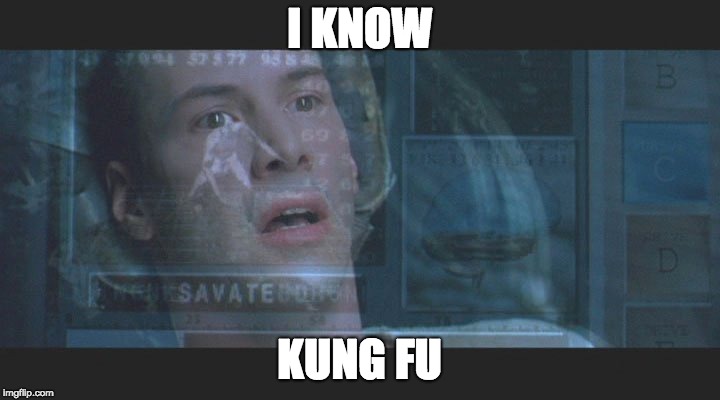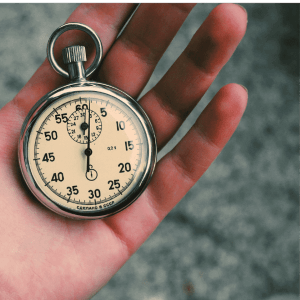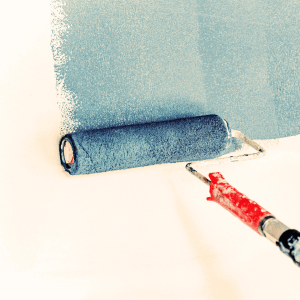Learn to speed Read
What Is Speed Reading
Speed reading is a technique to read at a much faster pace than normal. Read faster training, when practiced becomes an efficient way of ingesting information in less time.
Speed reading is useful for people who want to read faster and retain more information. Some of the tools we use include skimming, scanning, chunking and focusing. To speed read effectively, it’s important to practice regularly. You want to focus on improving your reading speed without sacrificing comprehension.
Learn to read faster
Is your reading speed predetermined? Is it your destiny to be able to only read at your current speed or can you improve?
Reading is a skill and like any skill it can of course be improved.
With a little bit of effort and dedication, anyone can learn to speed read and become a faster reader.
Speed reading is a skill that can be learned with practice. To measure your progress, Use a timer and a set piece of text or time yourself using this test. The average reading speed for most people is around 200-300 words per minute (wpm). It has been shown that it’s possible to read up to 3,000 wpm with enough speed reading practice and training. By utilizing techniques such as scanning and previewing, you can increase your reading speed and consume more information in less time.
The average adult reads at a pace of 200-250 words per minute (wpm). With practice and improved comprehension skills, you too can increase your reading speed. Most people tend to limit their speed to the pace they talk, which is around 300 wpm. By learning to speed read, you can unlock better productivity and save time while reading. There are various apps and techniques available that can help improve reading speed and comprehension skills.
You might not necessarily become the Usain Bolt of reading. But I would bet my bottom dollar that you’ll be able to run a lot faster if you train like Usain.
Makes sense right?
Learning to read and remember at speed
The very idea of reading at speed is really popular. Wouldn’t you feel like a superhero if you could flick through a book or thermodynamics and completely understand the concepts and content.
It would be like downloading a new skill in the matrix movie.
Who doesn’t want to be more like Neo?
“I know Kung Fu”

Neo – The Matrix
Neo learned all the martial arts in a quick minute downloading it like a new app for his brain.
You are going to need to build an operating system first to do that.
That is what Speed Reading will be for you!
Imagine if you could read a book everyday. Imagine reading, understanding and retaining all or most of that information!
With a year of absorbing all that material you could choose from your very own pick and mix list of desired skills:

Mindfulness and meditation practices: Better stress management and improved mental health.
Time management and productivity tips: Increased efficiency and the ability to achieve more in less time.


The art of persuasion and negotiation: Improved communication skills and the ability to influence others effectively.
Money management and financial literacy: Financial independence and the ability to make informed decisions about money.


Personal development and self-improvement strategies: Increased self-awareness, confidence, and the ability to set and achieve personal goals.
Foreign language skills: Improved communication with people from different cultures and the ability to travel and explore other countries.


Basic programming skills: Better understanding of technology and the ability to create simple software programs.
Science and technology advancements: Understanding of how the world works and the ability to participate in scientific discussions.


History and politics: Deeper understanding of society and the ability to make informed decisions about politics.
DIY and home improvement skills: The ability to save money by fixing things around the house and the satisfaction of completing projects.


Health and fitness techniques: Improved physical and mental well-being and the ability to live a healthier lifestyle.
Artistic skills such as drawing, painting, and photography: The ability to express creativity and produce beautiful works of art.


Travel guides and cultural studies: The ability to learn about and appreciate different cultures and the opportunity to travel and experience new places.
That is the promise of speed reading.
Learning to speed read is hands down the single most important investment you can make in yourself!
Sounds amazing, right?
What about comprehension?
Will comprehension improve or get worse during speed reading ?
The truth is once you learn to speed read and practice with proper techniques, comprehension can actually improve along with you reading speed.
The key thing is to train your brain to process information more efficiently and effectively. Remember it’s read faster training and those are the important words here; read faster training. Means you’ll train to read without sacrificing understanding otherwise you aren’t really reading at all. You’ll be able to get through large volumes of text and retain information better than ever before!
So why not give it a try? Learning to speed read could open up a whole new world of knowledge and opportunities for personal growth.
Why do you read at the speed you do?
Those of us that have learnt to read tend to take it for granted. It is something we have pretty much always done. We read something everyday, whether that’s a book, a webpage or a street sign.
And yet we don’t really question our reading techniques or habits. How we read is ingrained from a young age and then we focus on the content not the method of consumption.
At school we learn our ABCs. Then we learn ‘A cat sat on the mat’, one letter at a time. As our skill grows we read more fluently but we don’t tend to add more technical skills at this point. We just accept we can read and this is how we do it.
Interestingly if I show you the word ‘cat’ now how do you read it? Not by sounding out the letters. You may or may not hear the word in your head. I imagine you recognise all three letters as one ‘thing’.
Hieroglyphics illustrate an interesting phenomenon: reading is an automatic unavoidable process starting as soon as you see familiar characters.
Now let’s think like an ancient Egyptian.
He reads these graphics not as mere graphics but as text. Most interestingly these hieroglyphics clearly demonstrate a speed reading mechanism. With this writing system the character ‘water’ can either represent the sound of ‘water’ or the idea of water. The Egyptian reader had direct visual access to meaning. Without the time consuming need to build the sound with his inner voice. Just like the good reader today seeing the word ‘water’ or ‘cat’.
Maybe a better way to learn at would be to start with Hieroglyphics.
BAD HABITS
What are the bad habits of reading
Breaking Bad Reading Habits
By spotting and changing a few bad habits, you can quickly increase your reading speed without greatly reducing comprehension.
These are the quick wins:
GOOD HABITS
One of the keys to building good habits is to have quick wins. We want a way to learn some skill quickly otherwise we are prone to give up. Since we all read something pretty much every day we want to make reading better a real habit.
Preparation is key. As humans we have very short attention spans so we will need to give ourselves the best chance of learning this new valuable skill.
As a beginner in speed reading you’ll want to set some time aside to focus and learn. You may need to set yourself some boundaries.
20 minutes a day for 7 days should allow you to double your reading speed – so:
- Set a specific time each day to learn this new skill
- Spend up to 20 minutes in a session to begin with
- If you lose focus, take a break
- Don’t beat yourself up for not be a ninja straight away!
Master what we measure – set a timer
How To Calculate Your Reading Speed
- test your speed
- Test your comprehension
- record your progress
- make learning a habit – do it daily until you achieve a habitual level of skill
Environment
- Remove distractions, if you like to listen to music pick some instrumental music
- Practice good “reading hygiene”
- Have good light (and glasses if you need them)
- What’s best for you? Bright screen iphone, Dark Screen kindle or no Screen book?
- Tailor your speed reading exercises and find the easiest way that works for you.
- Find a quiet place
- Have a regular time each day that you commit to reading
Commit
Let’s get a goal now and commit to it.
Write this down on a piece of paper and stick it somewhere you see every first thing every morning:
I <name> commit to doubling my reading speed in the next 7 days.
Now you have laid out of training and speed-reading practice programme. Committed to your goal, set aside the time and created an inducive environment you can get started.
Learn to Reading Speed
Want to learn how to read at speed?
Lets do it!
First we are going to look at the type of reading you currently do, so you can recognise where Learn to speed read
Read Faster Training
Subvocalization
This is the most common type of reading where you sound out each word in your head so you can kind of yourself speaking it to yourself. Like a naughty four year old. Interestingly, this is how we learn to read at school. Sounding out words. One at a time. It’s the slowest form of reading.
Auditory reading
Hearing out the words. This is more like having someone read to you, so you hear as you read. This is a faster process but is limited by how quickly you can speak.
Visual reading
To me this one sounds pretty much like a Jedi mind trick but visualization is a real thing! Understanding the meaning of the word from looking at it. You don’t need to sound it out or hear it. This is the fastest process. This is exactly how Obi-Wan reads.
Words Per Minute (WPM)
Going back to the typical reading speed for the average person of between 200 and 300 WPM
So, the average reading speed for an English speaking person is about 250 words per minute. There is a range depending on a number of variables. The material read and the medium it is read on.
Subvocalization readers (Mental readers) generally read at approximately 250 words per minute, auditory readers at approximately 450 words per minute and visual readers at approximately 700 words per minute. Proficient readers are able to read 280–350 wpm without compromising comprehension.
What type of Reader are you? Where are your reading strengths and weaknesses? Working that out is going to help you decide where your focus should be.
There are a number of different strategies and techniques to speed up your reading:
Skimming:
You’ll quickly scan the text for it’s main ideas and important details. without reading every word. Skimming is the first step to getting an overall understanding of a text.
Scanning:
Similar to skimming, scanning involves looking for specific information, such as a particular name, date or keyword. It is useful when you are searching for specific information in a text. Paired with skimming it’s a great revision strategy.
Meta-guiding:
Also known as The Pointer Method Hand Pacing Technique
This involves using a pen or finger to guide your eyes along the text, which can help to reduce subvocalization (the habit of pronouncing words in your head as you read) and increase reading speed. As you get better at this method you can introduce a card to move it down the page as you read above each line. Hiding what you have already read. This helps to stop you re-reading words and focuses you on going forward. Eventually you can lose the card and ‘free-read’ the page.
Previewing:
Pre-reading involves looking at the headings, subheadings, and other organizational features of a text before reading it. It can help you get a sense of the structure and main ideas of a text before diving in. Understanding the context of the material will also help with comprehension. You can skip around the words, search for keywords and phrases that might be important information this stage. Your subconscious will pick up more than you think.
Ninja-Level Speed Reading Techniques
(Park these approaches until you have mastered the quick wins above).
Chunking: This involves grouping words together to read them in larger chunks rather than one word at a time. View the reading material as a whole and pick out a paragraph for example. You can see more than a single word at a time. Use that to your advantage. This technique can be useful for improving reading speed and comprehension.
Rapid serial visual presentation (RSVP): This involves displaying words or phrases one at a time at a rapid pace, typically between 300-1000 words per minute. This technique can be useful for training your brain to process information more quickly.
Eliminating subvocalization: This technique involves consciously trying to stop pronouncing the words in your head as you read, which can help to increase reading speed. Really useful if you are predominantly a mental reader.
These techniques can be used individually or in combination to improve reading speed and comprehension. Remember, speed reading is (unfortunately) not magic. You need to work at it.
If you put in the time and effort you will get exponential results. Your vocabulary and comprehension will improve. Not just in as a faster reader but a life long better learner. And because reading is so ubiquitous you’ll see benefits in many areas of your life.
Learn to Speed Read, improving your reading skills really is the first skill you should download.
People Also Asked is there a quick way to faster reading?
If you feel like you don’t have time to learn to speed read maybe you should question that? Still want to the hacks? Here some for you:
- Ask yourself why am I reading this
- Scan sentences don’t read them
- Look for embolden words and keywords
- Scan the book for diagrams and photographs
- Reading the last page first
- Read the index
- checkout the contents page
The biggest hack is of course is to block out some time and learn the skills! A little time can offer big results. Pick a course and do it over time!
Is there an App for this?
I give up! If you want to become a superstar student a good idea is to start with something that interests you and then putting in the hard yards isn’t so hard. Failing that of course there’s an app! Go google it!
Learn to Speed Read and Read Faster Training References:
https://www.instagram.com/bbcfuture_official/
https://www.youtube.com/user/LifehackOrg/
Check out these read faster training books
Enjoy your speed reading journey!

